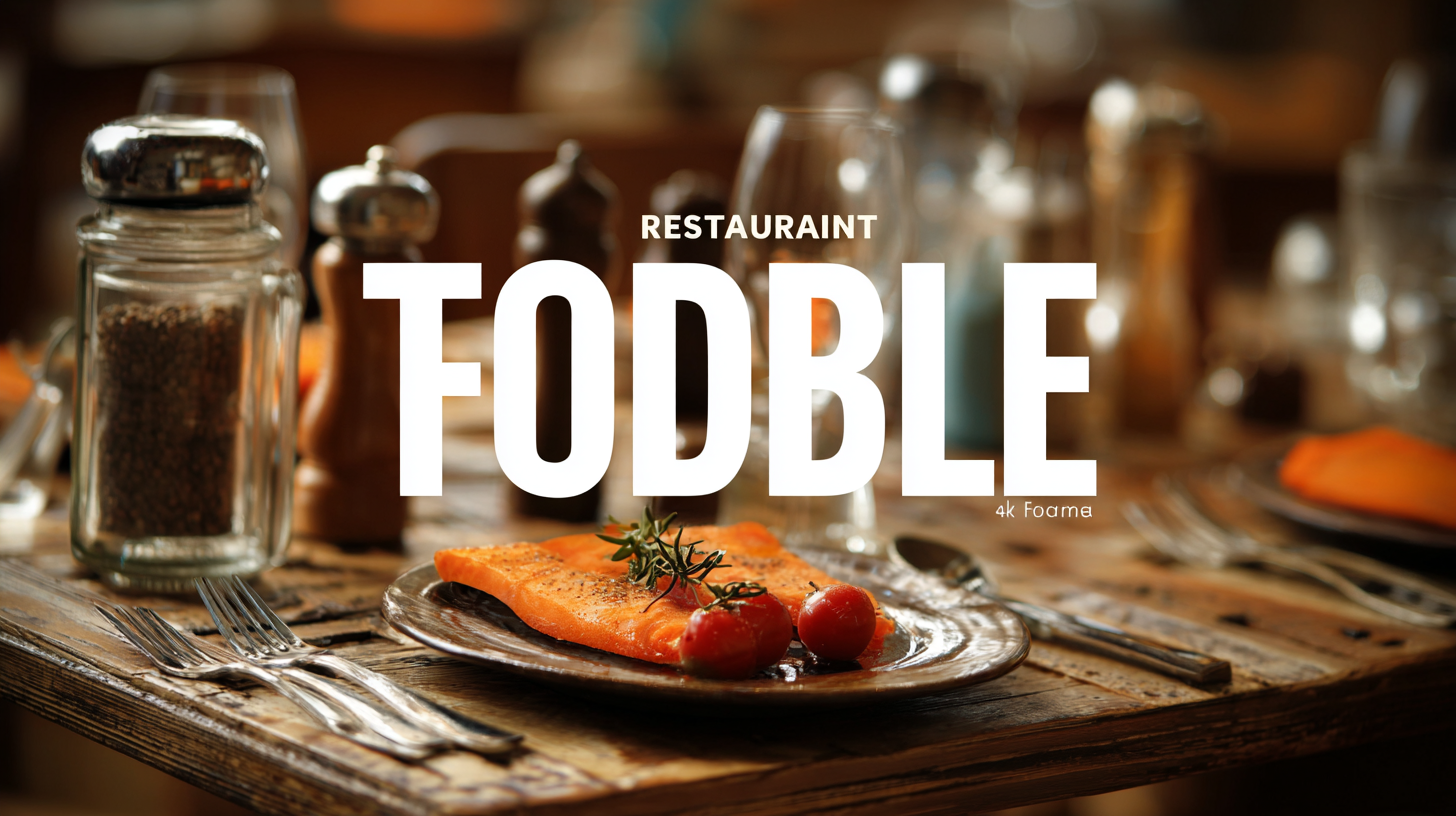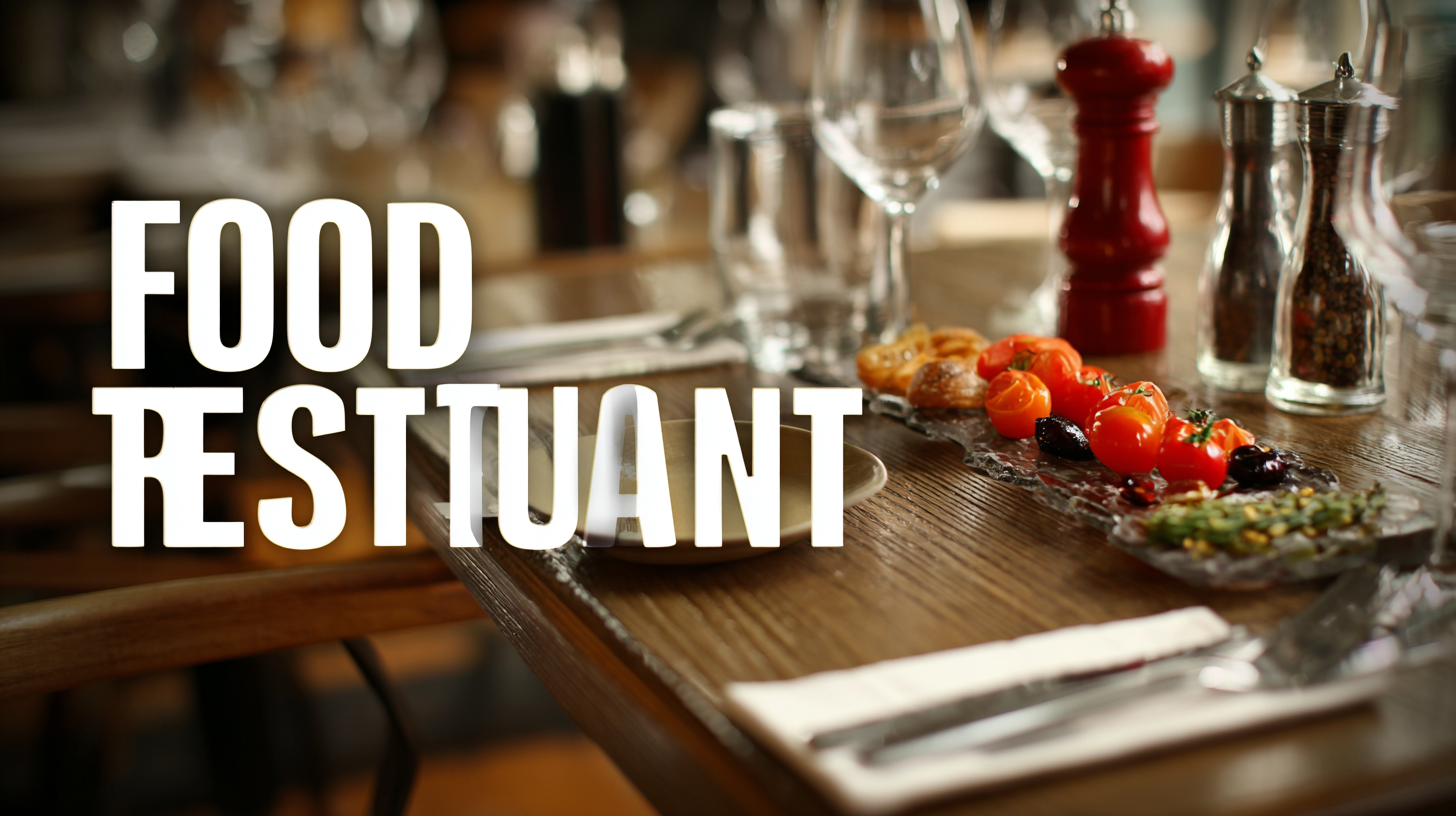When it comes to creating the perfect dining experience, the importance of a well-designed Food Restaurant Table cannot be overstated. The right table not only enhances the ambiance of your restaurant but also influences customer comfort and retention. In this ultimate guide, we will explore the seven essential features that make up the best Food Restaurant Table. From size and shape to material and finish, each aspect plays a crucial role in not only complementing your restaurant's aesthetic but also catering to the practical needs of both staff and diners. Whether you're a budding restaurateur aiming to establish your brand or a seasoned owner looking to elevate your space, understanding these features will help you create an inviting and functional dining environment that keeps customers coming back for more.

Join us as we delve into the specifics of what makes a Food Restaurant Table truly exceptional.
When it comes to enhancing the dining experience at a restaurant, the importance of choosing the right table cannot be overstated. One of the key features to consider is the size and shape of the table. A spacious table allows for comfort and ease of movement while dining, accommodating various group sizes from intimate dinners to larger gatherings. Additionally, round tables foster conversation and connection among diners, making them a popular choice in many restaurants.
Another essential feature is the material and design of the table. High-quality materials not only contribute to the entire aesthetic of the restaurant but also ensure durability and ease of maintenance. For instance, wooden tables offer a warm and inviting feel, while sleek, modern designs in metal or glass can create a trendy ambiance. Furthermore, tables with adjustable heights or configurations can cater to diverse dining needs, from casual meals to formal events, enhancing the overall guest experience and satisfaction.
When selecting tables for a restaurant, understanding the various materials available is crucial. Different materials come with unique pros and cons that can impact both functionality and aesthetics. For instance, wood is a popular choice due to its warm appearance and versatility. It can easily complement various décor styles, from rustic to modern. However, wood tables often require regular maintenance to prevent scratches and water damage.
On the other hand, metal tables offer a sleek and durable option that withstands heavy use. These tables are often resistant to wear and tear, making them ideal for busy environments. While metal tables may not provide the same warmth as wood, they can be paired with colorful table settings to create inviting atmospheres. Conversely, plastic tables are lightweight and easy to clean, but they may not convey the same level of sophistication as wood or metal options. Understanding the pros and cons of these materials helps restaurateurs make informed decisions that suit their operational needs and aesthetic preferences.

When designing a dining space, the harmony between style and functionality is paramount. The latest trends highlight the importance of using thoughtful design elements that not only enhance the aesthetics but also maximize the utility of the area. For example, incorporating Japandi-style features can transform a cramped dining room into a warm and welcoming environment. This minimalist aesthetic emphasizes natural materials and warm hues, creating a serene ambiance that invites connection and conversation.
In addition to aesthetics, practical considerations are vital. Designers emphasize space planning and functionality to ensure the dining area accommodates gatherings of various sizes. Choosing the right table can significantly impact this, with versatile options allowing for easy transitions between intimate dinners and larger celebrations. The table should complement the overall design while being adaptable to daily needs, ensuring it serves as both a stunning focal point and a practical piece for everyday use. By balancing style with smart design choices, any dining space can become a perfect setting for memorable meals.

When it comes to setting up a restaurant, one of the most crucial yet often overlooked aspects is selecting the right table size. According to industry reports, the average restaurant table should accommodate 2 people per 1.5 to 2 square feet of space. This allows for comfortable dining without feeling cramped, which can significantly enhance the overall customer experience. A well-planned table arrangement can maximize floor space, ensuring that the restaurant can serve more guests without sacrificing comfort.
**Tip:** Measure your dining area before purchasing tables. Aim for a 3 to 5-foot aisle between tables for optimal movement and service efficiency, in line with guidelines from the National Restaurant Association. This spacing not only facilitates smooth service but also creates an inviting atmosphere for diners, encouraging them to linger longer.
Another factor to consider is the height of the tables. Standard dining tables are typically 28 to 30 inches high, but it’s essential to choose tables that fit the overall theme of your restaurant. For example, a casual eatery might benefit from taller bistro tables, while a fine dining establishment should stick to traditional heights. Data suggests that the right table height contributes to a 20% increase in customer retention, as patrons appreciate the thoughtfulness of their surroundings.
**Tip:** Keep in mind the type of seating you'll be using. If you opt for higher chairs or stools, ensure that your tables are compatible in height to maintain a cohesive look and feel throughout your establishment.
| Feature | Description | Ideal Size (inches) | Material |
|---|---|---|---|
| Table Shape | Different shapes such as round, square, and rectangular can affect seating and ambiance. | 36 - 72 | Wood, Metal, Glass |
| Size | The dimensions need to accommodate the expected number of diners comfortably. | 30 - 72 | Solid Wood, Laminate |
| Height | Standard dining table height for comfortable seating. | 28 - 30 | Wood, Aluminum |
| Durability | Materials must withstand heavy use and potential spills. | N/A | High-pressure Laminate, Steel |
| Customization | Ability to customize table style to match restaurant aesthetics. | Customizable | Varies |
| Sustainability | Using eco-friendly materials and production methods. | N/A | Reclaimed Wood, Bamboo |
| Maintaining Cleanliness | Design should facilitate easy cleaning and upkeep. | N/A | Laminate, Glass |
When selecting the best tables for a food restaurant, restaurateurs often find themselves grappling with the trade-off between durability and aesthetics. According to a report by IBISWorld, the average lifespan of restaurant furniture is approximately five to seven years, underscoring the importance of investing in durable materials that can withstand daily wear and tear. High-quality hardwoods and metal frames not only offer longevity but can also bear significant weight, making them ideal for busy dining environments. Furthermore, choosing water-resistant finishes ensures that tables can endure spills without warping or staining.
On the flip side, aesthetics play a crucial role in creating an inviting ambiance that attracts customers. Data from the National Restaurant Association indicates that 62% of diners say that the overall atmosphere of a restaurant influences their decision to return. This calls for a careful selection of colors, finishes, and designs that resonate with the restaurant's theme while maintaining a sense of cleanliness and comfort. By blending sturdy materials with appealing designs, restaurant owners can achieve a harmonious balance that enhances the dining experience while minimizing long-term replacement costs. Ultimately, prioritizing both durability and aesthetic appeal is a strategic approach that can yield both immediate and lasting benefits.
©2024 Pine Vista LLC, DBA Design Manufacturing Group. All Rights Reserved.



©2024 Pine Vista LLC, DBA Design Manufacturing Group. All Rights Reserved.
